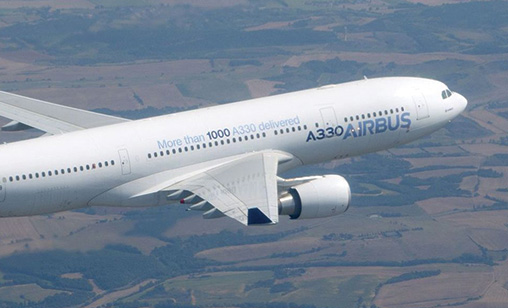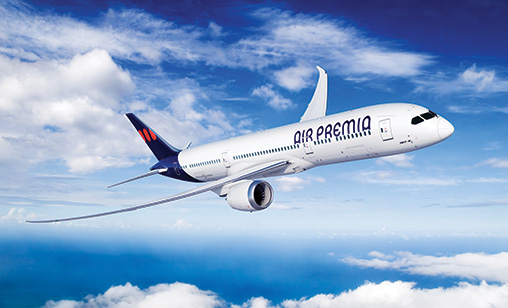News Backgrounder
Asia’s fresh outbreak of start-up fever
October 1st 2019
Consolidation remains the keyword in the mature Europe and North America markets. Read More » But Asia is experiencing start-up fever after a few steady years. Most Asian airline launches in the past decade were in China or were low-cost subsidiaries established by existing airline groups. The new carriers span a range of business models, geography and ownership.
The previous wave of start-ups depended on low costs or government incentives. Most of the latest start-ups are seeking a yield premium. This strategy raises a central question: how many markets in Asia can sustain sizeable premium demand? The forecast weakened economic environment in coming years makes the launch phase of the new start-ups all the more challenging.
 |
The prominence of wide-bodies in the fleets of the new start-ups adds risk to their planned operations. Two of the carriers, Korea’s Air Premia and Japan’s ZIP, will only fly wide-bodies. Vietnam’s Bamboo Airways and Taiwan’s Starlux plan to have wide-bodies flying early in their operating histories.
While Cebu Pacific and Jetstar have demonstrated new entrants into the region’s markets can successfully operate wide-bodies, inevitably there will be comparisons with Europe, where Norwegian is being restructured and WOW Air has gone out of business. WOW board member and a former CEO of U.S. ultra LCC, Spirit Airlines, Ben Baldanza, wrote last March that WOW’s collapse was guaranteed after it added A330s to its narrow-body fleet.
“The A330 is a great airplane when used efficiently,” Baldanza wrote in an article posted on LinkedIn. “It allowed WOW to serve markets the A321 could not such as Los Angeles and San Francisco. But filling such a large plane from those markets to highly seasonal Iceland and connecting points in Europe proved disastrous.”
Baldanza added: “For such a small airline with a small total fleet count, the A330 created enormous operating challenges and distraction, taking WOW’s eyes off the core ball.”
ZIP is launching with 787-8s formerly flown by its 100% shareholder, Japan Airlines (JAL), giving it financial and management backing. Air Premia is leasing new 787-9s, although terms may be favourable for the transactions given the excess of the wide-body’s supply in the market.
Air Premia was founded by a former Jeju Air CEO who has since left the airline. It is 100% privately held and does not have an airline backer or majority investment from a major Korean company or even a chaebol.
ZIP’s indication of a seat count of around 300 – less than Scoot or Jetstar – may reflect needing less weight to fly further. Air Premia will have 309 seats, not significantly more than the 271 Korean Air has on its 787-9.
 |
Observers credit Air Premia with changing airline financing by holding investment rounds and going to venture capitalists as tech start-ups do. Air Premia’s first office was in co-working space, WeWork, in downtown Seoul, a change from the far-flung offices of most airlines and part of Air Premia’s attempt to attract talented management. Air Premia’s independence means it is on its own and has to seek markets and passengers.
ZIP’s JAL shareholding means it will be automatically included in JAL’s joint ventures in the same way that LEVEL does with IAG and Eurowings with the Lufthansa Group. Joint ventures could deliver an unexpected boost for Air Premia if the Korean Air (KAL)-Delta Air Lines partnership constrains supply.
From full-service Hong Kong Airlines to low-cost AirAsia X, new entrants pursuing long-haul flying have learned the necessity of short-haul feed to help fill their planes. Hybrid Air Premia and low-cost/hybrid ZIP do not plan feeder flights. Their respective homes, Seoul Incheon and Tokyo Narita, may be large enough to rely on local demand.
Each of the start-ups has a population of 10 million in its immediate region to draw on. The greater Tokyo metropolis has more than 35 million residents and Seoul Incheon is easily accessible to most of peninsular Korea.
Some Korea-Japan return trips cost less than US$100. Even if long-haul new entrants have fares proportional in cost to short-haul flights, the net fare will still be multiples higher and journey time longer, reducing demand.
The AirAsia X and Scoot franchises mostly target Asia as their destination markets. ZIP’s initial cities will be Bangkok and Seoul while it awaits ETOPS certification for long-haul flights to North America and Europe. Air Premia will launch within Asia, but plans Europe and North America flying where in-country costs are higher than trips within Asia.
ZIP is commonly described as a competitive response to LCCs such as Scoot and AirAsia X, which is using fifth freedom rights to fly to Honolulu and is targeting the U.S. West Coast early next decade.
 |
ZIP is arguably JAL’s response to All Nippon Airways (ANA), which has far outgrown JAL in Europe, North America and Southeast Asia. While JAL is no longer under government-imposed growth restrictions, lingering effects from its bankruptcy make it complicated to hire pilots. As a new airline, ZIP does not face these constraints.
With strong premium focuses, ANA and JAL have left some markets unserved that were judged not be sufficiently profitable to operate, creating opportunities for ZIP. In Korea, incumbents Korean Air and Asiana are more prolific, especially in Europe, which will reduce opportunities for Air Premia. Additionally, Russian overflight rights are constrained in Korea but not in Japan.
Bamboo Airways is targeting one of the world’s largest unserved markets, direct Vietnam-U.S. flights. An advantage of this strategy is that traffic is largely concentrated between Ho Chi Minh and Los Angeles. But challenges are aplenty. The distance is punishing and most aircraft only can fly non-stop with payload restrictions.
While a voluminous market, it is largely price-sensitive with most passengers travelling in economy. It will be challenging for Bamboo to attain a yield premium as well as business class passengers.
The Vietnam-U.S. market has competitive one-stop fares from most intermediary Northeast Asian airlines and sometimes Gulf carriers. One of the sixth freedom heavyweights is EVA Air, whose former chairman, Chang Kuo-wei, is launching a competitor: Starlux Airlines. Starlux expects to start flights in January 2020 with A321s and later operate A350s to North America.
Unlike Bamboo in Vietnam, Starlux will have almost no domestic market. Starlux’s initial years of operations will pit it against a variety of local and foreign airlines. Adding to the challenge, it will have to find destinations suitable for local traffic as well as markets that will feed North America flights.
Taiwan’s local demand is too small for the plethora of capacity. When Chang was at EVA, about 50% of passengers on EVA’s North America flights connected beyond Taipei, mostly to Southeast Asia. Taiwanese media has reported Starlux initially will look at under-served secondary Asian cities that are good for local traffic. But the large hubs for North American feed, such as Singapore, Ho Chi Minh and Jakarta, are harder to penetrate.
Supporting a long-haul network with regional connections proved too challenging for Hong Kong Airlines, which has pared back its relatively new North America network. Bamboo will not necessarily require international feed, but it could help. Bamboo has strong financial backing from Vietnamese real estate to leisure travel conglomerate, FLC Group, whose strategy includes synergies between Bamboo and the group’s resorts.
Korea’s SK Group recently invested US$1 billion in Vietnam’s Vingroup which is launching its own airline, Vinpearl Air. Vietnam’s start-up scene is more crowded with two more planned start-ups: Vietravel and KiteAir. Some observers thought Vietnam’s market was too crowded with Bamboo’s entry.
VietJet’s growth prompted questions about how the Vietnamese government saw private companies taking market share from Vietnam Airlines and its LCC, Jetstar Pacific. But perhaps Vietnam will be similar to Thailand with a wide range of private competition.
One of the liveliest markets is Korea. Besides Air Premia, Seoul gave licenses to two short-haul LCCs. Fly Gangwon is due to launch in October and Aero K is expected to fly in 2020. Both will initially have secondary city bases.
A fourth Korean start-up is Hi Air, which will base ATRs at Ulsan by year-end. Its regional business model allowed a separate and faster regulatory process. Thailand is again seeing start-ups after the country passed an International Civil Aviation Organisation’s (ICAO) audit and received subsequent approval to operate new flights. The most advanced start-up is Thai EastarJet, although details about the project are scarce. Cambodia continues to receive start-up interest, mostly from Chinese backers who want to cash in on the Cambodia-China market.
Start-ups could return to China. China Eastern Airlines is converting its private jet operator to a commercial carrier, renamed Air 123. It will operate China’s ARJ21 and C919 aircraft. Media reports said other Chinese airlines could have dedicated airlines flying these aircraft types. Elsewhere in the region, there are ample opportunities to change markets if high barriers are overcome.